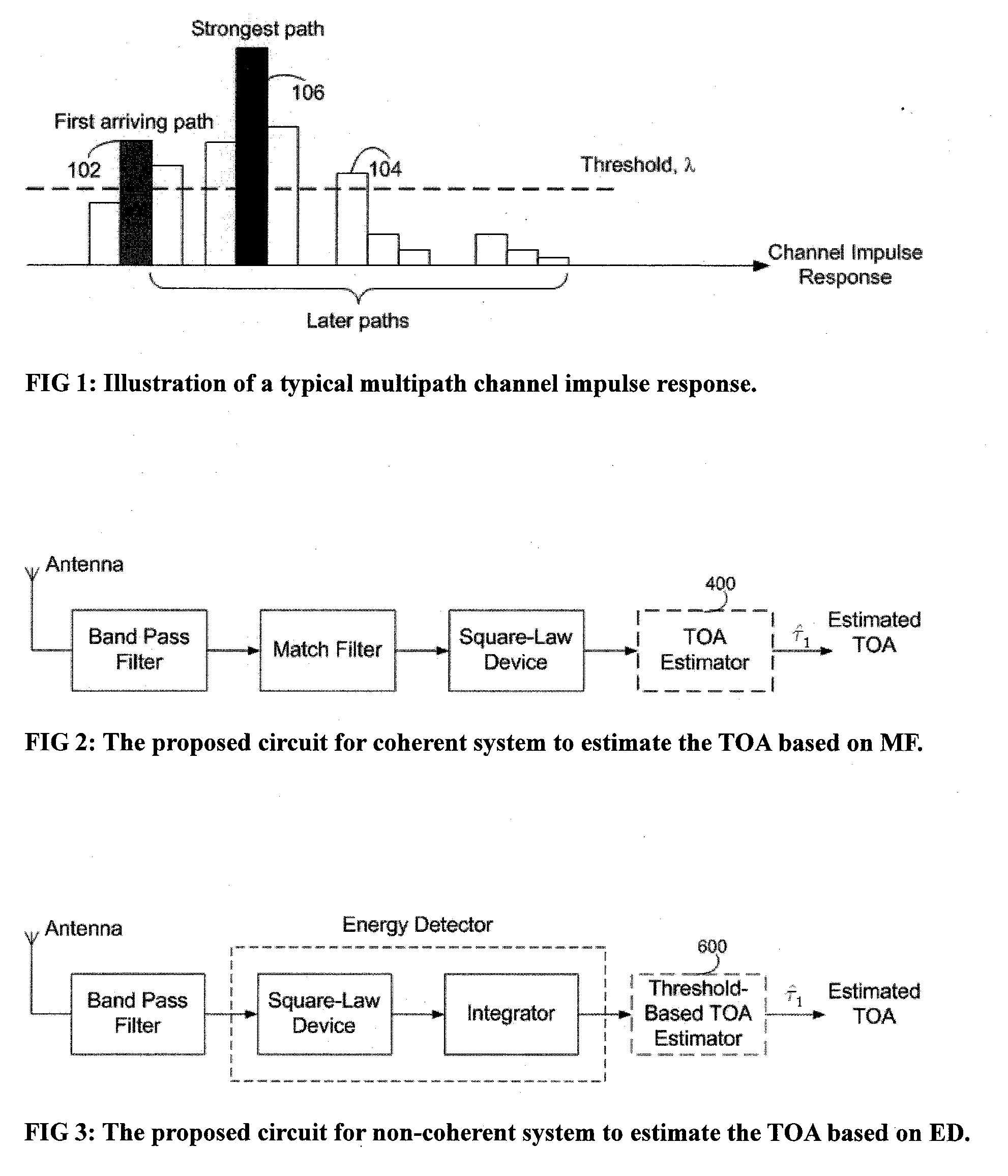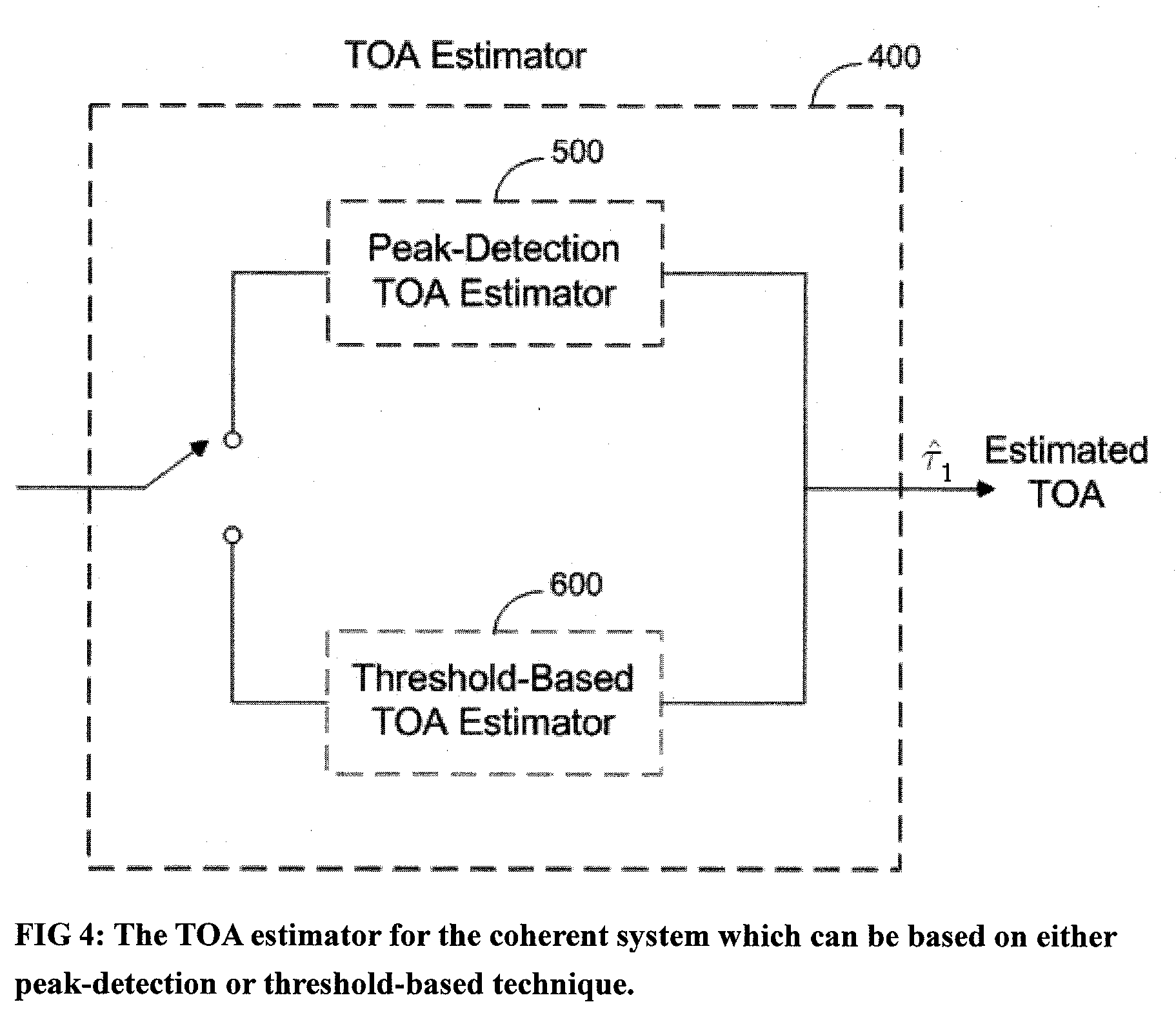Method for optimum bandwidth selection of time-of-arrival estimators
- Summary
- Abstract
- Description
- Claims
- Application Information
AI Technical Summary
Benefits of technology
Problems solved by technology
Method used
Image
Examples
Embodiment Construction
[0026]FIG. 1 shows a typical multipath channel impulse response. U.S. provisional patent application (“the '526 Provisional Application”), Ser. No. 60 / 868,526, entitled “Method for Optimum Threshold Selection of Time-of-Arrival Estimators,” filed on 4 Dec. 2006, discloses that, for geolocation purposes, the first arriving path (i.e., path 102 of FIG. 1), and not the later arrivals 104 (including the strongest path 106) is more significant to the ranging system accuracy. The disclosure of the '526 Provisional Application is hereby incorporated by reference in its entirety.
[0027]A UWB multipath channel is given by
h(t)=∑l=1Lαlδ(t-τl),(1)
where L is the total number of MPCs, while a1 and t1 are the multipath gain coefficient and the TOA of the lth MPC, respectively. Based on (1), the signal r (t) received after the multipath channel is given by
r(t)=∑l=1Lαlp(t-τl)+n(t),(2)
where p(t) is the transmit signal pulse with duration Tp, while {a1}l=1L and {t1}l=1L are the received amplitudes and ...
PUM
 Login to View More
Login to View More Abstract
Description
Claims
Application Information
 Login to View More
Login to View More - R&D
- Intellectual Property
- Life Sciences
- Materials
- Tech Scout
- Unparalleled Data Quality
- Higher Quality Content
- 60% Fewer Hallucinations
Browse by: Latest US Patents, China's latest patents, Technical Efficacy Thesaurus, Application Domain, Technology Topic, Popular Technical Reports.
© 2025 PatSnap. All rights reserved.Legal|Privacy policy|Modern Slavery Act Transparency Statement|Sitemap|About US| Contact US: help@patsnap.com



